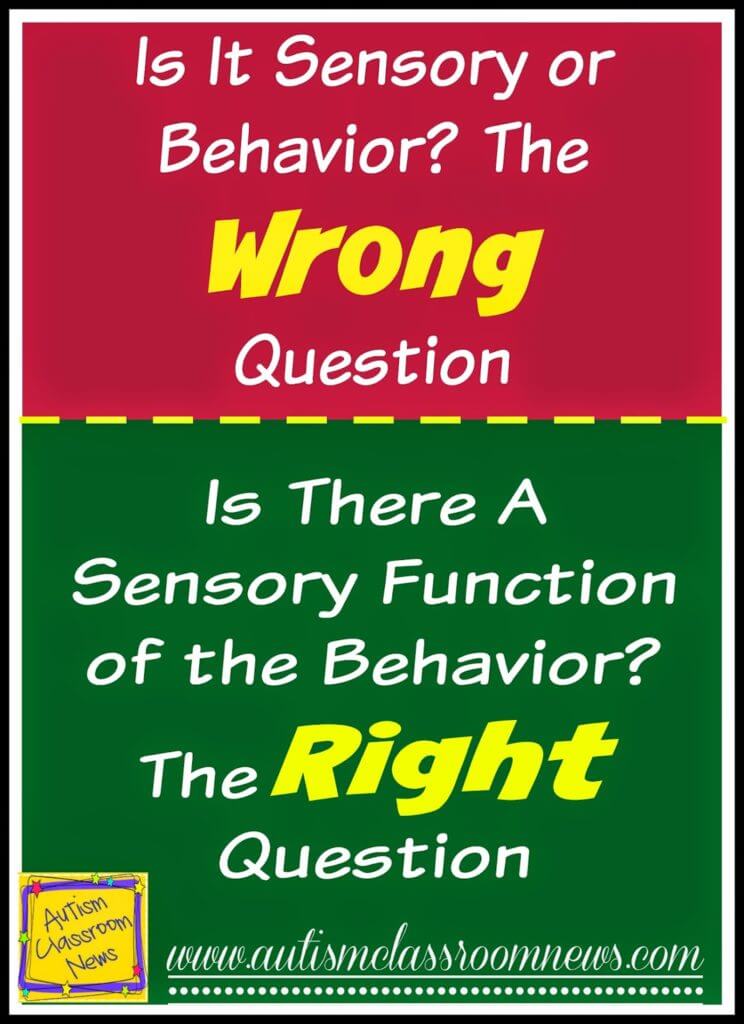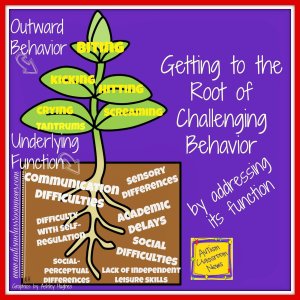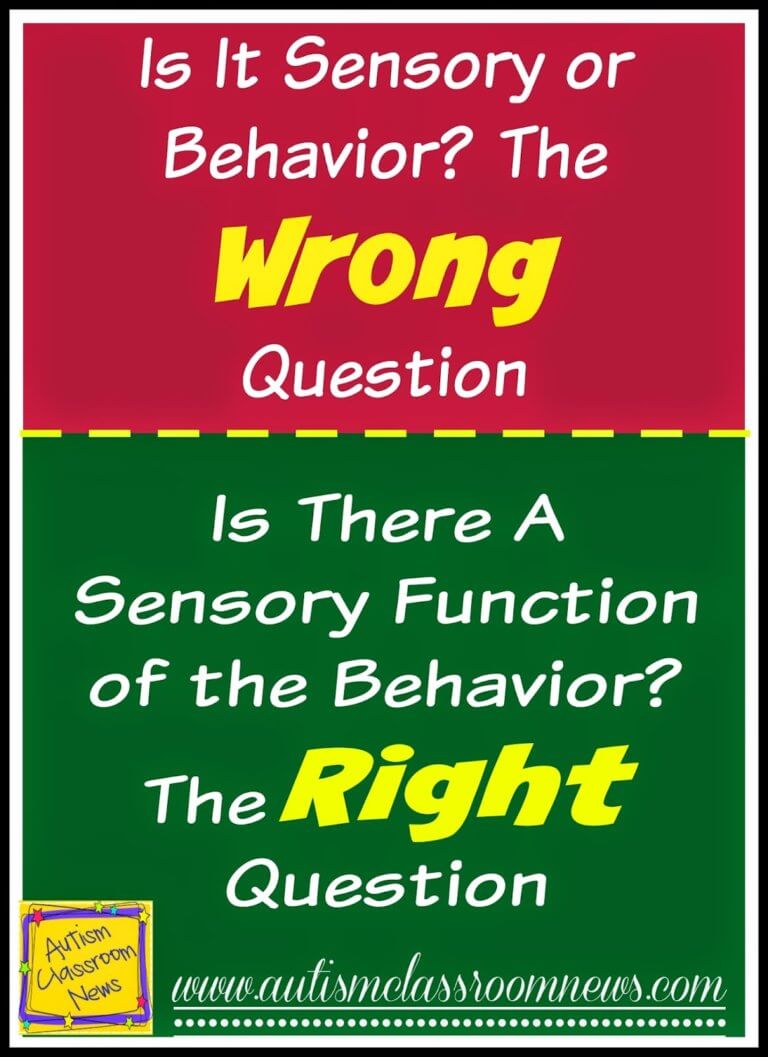 OK, I know I have already ruffled some feathers with the title of this post (Is It Sensory or Behavior?). But please hang with me and let me explain. I want to continue with the challenging behavior series by addressing the sensory or automatic function of challenging behavior. You can find more of this series here.
OK, I know I have already ruffled some feathers with the title of this post (Is It Sensory or Behavior?). But please hang with me and let me explain. I want to continue with the challenging behavior series by addressing the sensory or automatic function of challenging behavior. You can find more of this series here.
Recently on Pinterest I have been seeing lots of posts that pose the title of Is it Sensory or is it Behavior? I’m happy that people understand that all behaviors are not deliberately manipulative, which I think is what they are intending. They are making the differentiation between willful behavior (which assumes that challenging behavior is deliberate) and behavior that functions because an individual (often on the autism spectrum but not always) is overwhelmed by sensory input in their environment. However, there are some serious myths and misconceptions about this approach that I think go beyond semantics of how we talk about behavior that I want to explore in today’s post.
Why is it the Wrong Question?
1. Anything that we do (good, bad, appropriate, inappropriate, expected, unexpected) is behavior. I realize this is part of my behavioral geekiness, but the definition that we use of behavior is anything a dead man can’t do. Everything we do is behavior. And let’s face it, whatever it’s function, intentional or not, calling it sensory doesn’t make the behavior less of a problem. Hitting someone is still not an appropriate or desired behavior. Neither is head-banging or tantrumming or whatever the form of the behavior might be. We can teach appropriate behavior and we sometimes teaching inappropriate behaviors.
2. It presumes that all other behavior that does not have a sensory function is willful. Most challenging behaviors develop over time as a pattern of behavior. While certainly there are instances when a challenging behavior is a willful and intentional, most chronic problems are reactions to situations that have developed to get a need met. I’m sure you have situations in your personal life where you respond to certain triggers or situations from your mother, your spouse, your child. We often call it pushing our buttons. We might apologize for it later and we might try to keep from doing it, but it’s a habit or a response we have learned over time. And many times it’s not a sensory function–it doesn’t happen in the absence of an apparent antecedent or when we are left alone. Instead, it’s social and the way we respond to different situations.
So What’s the Right Question?
We know that individuals on the autism spectrum, and many others of our students with special needs, have sensory differences. Things are louder or softer, brighter or dimmer, or they might have more difficulty screening things out. So, what we want to know is whether there is a sensory component to the challenging behavior. So, the right question to ask is whether the behavior you want to change is related to two aspects of sensory input.
1. Automatic Reinforcement:
Some behaviors may serve an automatic function of gaining reinforcement internally. Everyone has sensory needs and many of us engage in behaviors, like nail biting, that we would like to stop that have an automatic reinforcer. We assess these behaviors by looking for behaviors that occur when there is nothing else going on (no demands, no interactions with other people). We have some research that indicates that some self-injury serves an automatic reinforcement–it is reinforced by an internal sensation. For instance, head-banging is sometimes seen in typical young children when they have ear infections. So, one question is whether the challenging behavior would occur if there was nothing else going on and may have an internal reinforcement component. Typically automatic reinforcement is seeking reinforcement from an internal sensation.
2. Escaping from Sensory Overload
This function is actually an escape function and your data tells you it’s escape because it involves the removal from situations that are overwhelming or are bothering the individual’s senses in some way. It might be too loud, or too smelly, or too bright or too crowded. These behaviors don’t provide automatic reinforcement, but they do seek to escape from situations in which the sensory experience is just too intense.
So, the right question is whether the behavior has a sensory component–is it internally reinforcing? Is it an attempt to gain or escape from a sensory experience. Don’t, however, assume that just because the behavior involves a sense (e.g., putting items in the mouth) that it is “sensory.” But this form of behavior may happen because people come running and pay lots of attention to that behavior to get the kid to spit it out.
 Long and short, it’s all about the function (once again). Please feel free to share your thoughts in the comments. Just please keep it civil and respectful for all involved.
Long and short, it’s all about the function (once again). Please feel free to share your thoughts in the comments. Just please keep it civil and respectful for all involved.
I’ll be back on Wednesday with Workbasket Wednesday–so get your task boxes posts or pictures ready to link up. Then Friday I’ll be back to talk about other aspects of sensory / automatic reinforcement functions and how we can address them.
Until next time,







